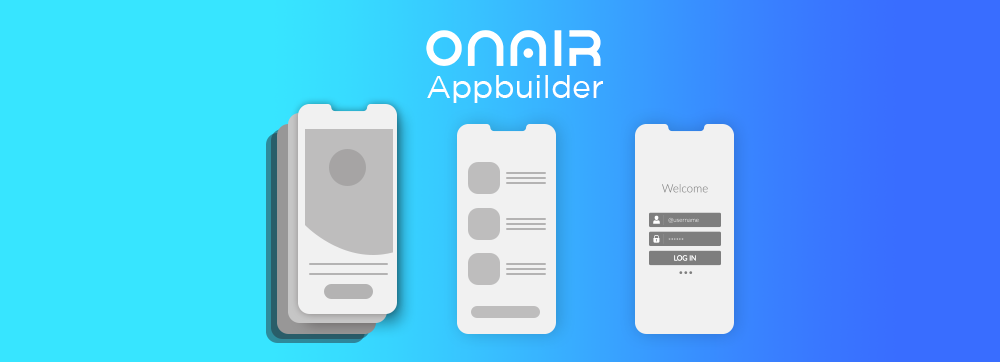Mobile applications have become an integral part of our lifestyle. People spend 90% of their internet time surfing apps. The mobile application industry’s market revenue is estimated to reach $935 Billion by 2023 constituting third-party promotions and paid downloads. If you have an exciting idea, this can be the right time to give your thoughts a screen.
However, building an application is not that easy as it sounds. There is a lot of back-end work that goes through to build a robust app. In the following article, we have listed 12 simple steps that will help you understand the entire process and give you an exact idea of where to start.
1. Think of a great app idea
The Android and Apple app stores have over 5 Million applications, many of which have never been downloaded. We have a mobile app for almost everything. Let’s do a fun activity! Go to your device’s app store and search applications having the most random use; we bet that you will find an app nine times out of the ten things you search. So, you must come up with an app that differentiates your idea from others.
Do thorough research on what problems your application wants to solve. Make a list of functionalities that you want to embed in your mobile app. Also, make sure your app resonates with the interest of your targeted audience. For instance, 69% of millennials mostly surf social media apps; another stat shows that over 70% of senior citizens have started consuming the internet. These statistics are by trusted organizations and can be used as a base to validate your idea. Thorough research on your targeted audience will help you get into their heads and identify their pain points.
2. Shape your app idea
Now that you have picked up an app idea and backed it up with research points. It’s time that you niche down to the core and structurize the evolution of your app. You must determine its overall look by listing down specific features that the application must possess. Create a roadmap that specifies every major element from building to testing it. It’s possible that you might not be able to jot down clear points at the moment, but it will become much more apparent as we move forward.
Another significant parameter to consider is the platform you want to launch your application. 92% of the apps are free on the Apple play store, as compared to 96% on Android. Even though the revenue collected by the Apple app store is nearly double that of the Android. Both these platforms have their pros and cons, Android serves you with a broad audience, and you can earn through their-party advertisements. In contrast, users of the apple play store are most likely to pay for a paid program.
3. Wireframe
Designing a wireframe is crucial to set your application’s foundation. The wireframe is a 2D representation of the app. You can design its web page and determine each functionality—there are many wireframe building stacks available online with customized pre-defined templates. Creating a wireframe for your application will help you structurize your design requirement while fabricating it on app-building platforms.
Ensure you design a wireframe that is easy to grasp and does not complicate the process. It is a crucial step; so, take your time and not rush. Analyze each web page to ensure that you are ready to move forward with the design. The approved wireframe will serve as a skeleton to your application and help you place each element appropriately.
4. Create an MVP
After you have constructed a wireframe, the next step would be to build an MVP (Minimum Viable Product). It is the beta version of your app, containing only the basic features. Creating this will accelerate the time to launch your application in the market. After this, you can take constructive feedback from users and add tailor-made solutions to your mobile app. It can also raise funds for a more significant launch from potential investors. You can easily create your MVP by taking help from various app-building programs available in the market.
The MVP must specify the problem you are solving and define your targeted audience. For instance, Instagram is a platform dedicated to sharing photos and videos with your followers. Its main aim is to boost connectivity between people, targeting millennials. Similarly, your MVP must be small and crisp and not confuse users with multiple varied functionalities. You can skip additional features to incorporate only ones that make a significant difference in your application’s working structure.
5. Take feedbacks
It is one of the crucial steps that many businesses and developers skip during the app development process. You have a basic version of your app idea; you must take genuine feedback from users. Consult your friends and family to be a part of this experiment and ask them for constructive feedback to improve your application’s performance.
Negative feedback should not dishearten you; instead, it must encourage you to perform better. In an interview, Bill Gates quoted, “Your most unhappy customers are the greatest source of learning.” So, identify your application’s weak points and work towards improving them.
6. Build your fully-functional application
It’s a step where you can start putting together the elements of your application. You already have a beta version of the app and genuine feedbacks to upgrade its functionality. To launch a fully functional application, you can either consult a professional developer or select an app-building platform. The developer will set your APIs, servers, and database, which can cost you a lot. At the same time, app-building programs are cost-effective and take care of all these technical terms.
Using these platforms is relatively easy; you can effectively construct your application using their drag-and-drop feature. Ensure you optimally use all the feedback to develop a better functionality app. At this step, you can also place a request to launch your application in the Google or Apple app store.
7. Design your UX/UI
It is one of the most crucial steps where you define the skin of your application. Researches found that 52% of people will not engage with a brand that provides a terrible mobile user experience. Your UX/UI will help users navigate through the application smoothly with a tint of animation to keep the app entertaining. Ensure the user feedback is in mind while designing its UX/UI.
You can either take help from a graphic designer or go with the design functionality that provides in-app building platforms for a smooth finish. The designing technology has revolutionized, and many app designing platforms follow a no-code methodology which allows even the non-coders to build their application without any professional help.
8. Test your application
We cannot emphasize how important it is to keep testing your mobile app to find any bug or incompetency. You have already tested your application’s structure and core functionality in the first round. But here, we will examine the application in and out. These are some of the areas that you will need to rigorously test to move forward-
● Rule-based Testing- These are if-then-else statements embedded in the application to capture response and answer accordingly. It needs to check to ensure that all the options perform well in the application.
● UI Testing- We need to examine whether the user interface is interactive and not buffering. It is the most crucial element in an application; any incompetency will bounce back your users.
● Security testing- As the name suggests, Security testing ensures that the application is safe from third-party attacks. Your application has to save itself and the confidential information of your users.
● Regression testing- It is to examine all the changes that you will be making during the process of testing. It’s like re-testing the tested elements.

9. Adapt changes
After working on every aspect of the app development process, you must be left with specific changes responsible for its clumsiness. Also, these updates need to be done quickly to ensure the mobile app’s timely launching. You have to deeply analyze user feedback with the results you got after testing the product.
10. Test your application in a live environment
Yayy! You just made an application that dedicatedly works to solve a user-centric problem. Now is the time you show this artwork to the world. However, before that, you will run a small test to determine how your application performs in a live environment. Both Android and Apple follow a different set of rules to do this.
In Android testing, you can install your application on any Android device and test whether the app performs well in all aspects. Rigorously use your mobile app to look for any incapability and update the changes accordingly. Whereas Apple follows a different approach, it offers a platform called TestFlight, specially made to run the app in a live environment. Here, you can invite professional testers willing to give you constructive feedback and to give genuine technical feedback to your application.
11. Adapt changes and Re-launch your app
After testing your application on a live platform, it’s crucial to make any significant changes that you observed before making it available to the public. Make sure you be extra vigilant during this process, as it is the last phase of backend testing for your application. After which, you can launch the product and analyze user feedback.
These people have used your application and are in a much better place to rate it on the app store. These reviews will help you construct a better version of your application with much more advanced functionality.
12. Promote your application
You have completed all the technical work, and now is the time to promote your application to ensure it reaches the right people. Both Android and Apple get thousands of new app every day, so it’s essential to have a market presence that separates your app from competitors.
Here is the list of promotional ideas that you can use for your application-
● Use social media platforms- Applications like Instagram, Facebook, Twitter, or Pinterest are among the highest surfing community apps. So, you can hype up your game by promoting your application on multiple social media platforms. You can launch paid ads that will only reach your targeted audience.
● Ask for reviews- You can consult content writers for your niche to use the application and write about it in their blogs. Avoid asking only for fair reviews, analyze their thought process and update your app accordingly.
● Create teasers- Teasers are short clips that will highlight all the application’s significant functionalities. For instance, if you have an embedded real-time messaging option in your application, then you can talk about the benefits of live chat integration for businesses.
● Google Ads- You can take help from google to post your application ad whenever someone types a particular keyword. It will ensure that your application reaches your target audience and eventually improve app download.
● Start a blog- Writing articles about your application will make people aware of your brand, and they might want to give it a try. This is the most inexpensive method to promote your app idea, which will eventually grow if you post consistent content.
How to Build a Mobile App in 12 Easy Steps?
We have tried to cover every aspect of app building through this article. Creating your first mobile app might look extra challenging but reaching the finishing line is an entire constructive journey itself. You just need to identify a great idea to create an awesome mobile application and with ON AIR App Builder you can build an app without any technical knowledge. Start Now!


